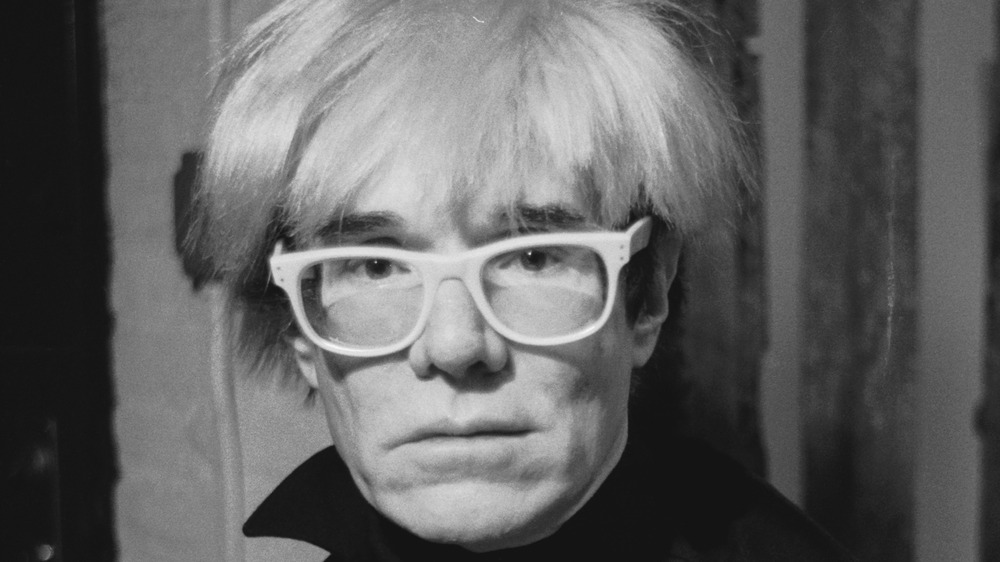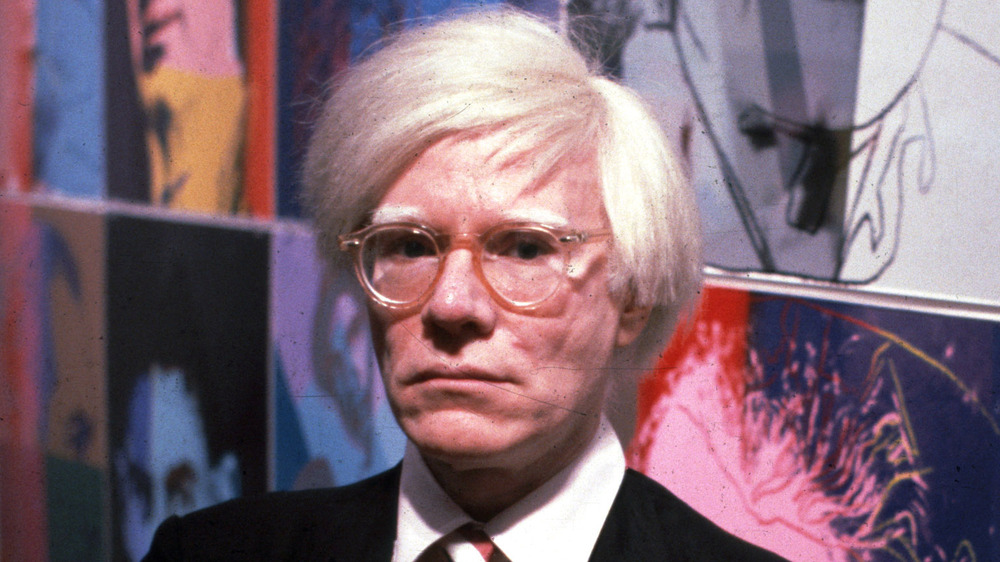The Surprising Thing Andy Warhol Added To Some Of His Paintings
Andy Warhol's work has long sparked controversy in the art world. Some of his most famous art made use of popular iconography such as brand logos and famous faces. Was this really art, or just commerce? Couldn't anyone make prints of the Paramount logo in several colorways? Why are his prints of Campbell's soup cans worth approximately a zillion dollars apiece?
While these questions are open-ended, they do prove one thing: Warhol's work got people talking. He left an eternal impact on the art world. And even if someone else could have created these works, that doesn't mean they did. Warhol boldly went where no one else dared to go, and explored that territory through pop art, avant-garde films, and, in some cases, using his own bodily fluids as media.
In the late 1970s, Warhol created one of his most unorthodox series ever: The Oxidations. The series consisted of several abstract paintings that made use of the chemical properties of, ahem, urine. The series became known as Warhol's "piss paintings."
Andy Warhol created a series of paintings known as his 'Piss Paintings'
"Andy Warhol's Oxidation paintings, perhaps more than any other series in his oeuvre, embody a striking paradox: they are at once aesthetically rich and gleefully transgressive," reads the description of The Oxidations on the website of upscale auction house Christie's. According to the site, one of the paintings, which features a coppery background interrupted by green splotches, sold for nearly $1.9 million back in 2008.
"Its surface offers up sensual delight in its coppery iridescence, and its composition is enlivened by elegant splashes that radiate outward with visceral energy," the Christie's description of the work continues. "Yet Warhol's method for achieving such rich painterly abstraction was notoriously base, the product of Warhol and company urinating on the copper-coated canvas."
In his 1989 book The Andy Warhol Diaries, Warhol explained that his assistant, Ronny Cutrone, was the ideal candidate to contribute the bodily fluid. "He takes a lot of vitamin B so the canvas turns a really pretty color when it's his piss," the artist wrote.
Cutrone himself recalled — as quoted in Andy Warhol: The Late Work (via Christie's) — that the artistic process for The Oxidations "became almost a sort of performance." He added, "The studio would become like a toilet, a giant urinal."

